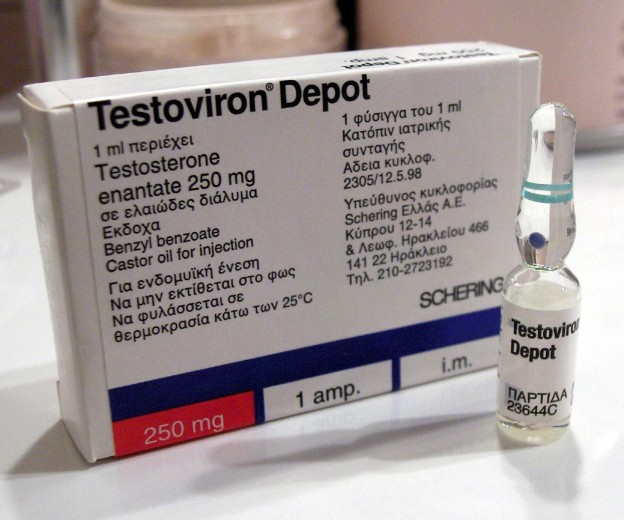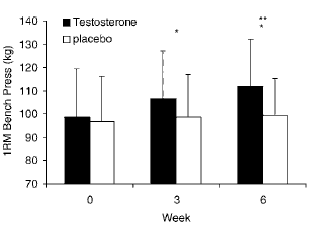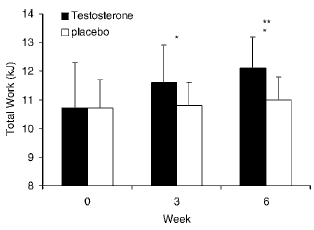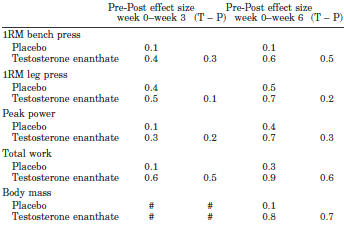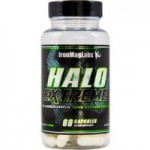Testosterone Long Esters “Kick-In” Myth
Blog Entry #45
By Admin – Steroidal.com
Some of the longer acting estered anabolic steroids are some of the most popular around and have been used for decades. The first anabolic steroids produced and used by the Soviet Union in the 1940s and 1950s were Testosetrne Suspension, which is testosterone without an ester. This raises the level of total testosterone in the blood after injection to higher levels than those produced naturally, thus giving the steroid user an advantage. This was evident at the 1950s Olympic Games when the Soviet Union dominated all other competitors, including the USA. A short while after this, Testosterone Enanthate was developed. Enanthate is a long acting ester attached to the parent hormone – Testosterone allowing for a longer slow release of the parent hormone, unlike Testosterone Suspension. Testosterone was designed for medical purposes, as Testosterone Suspension was not seen as very versatile as it needs to be injected once or twice daily. This is compared to Test Enan that needs only once per week injections and is active for 14-16 days. Testoviron was born by Schering and is still in production today and is the most popular used hormone replacement therapy preparation. Second on the scene was Testosterone Cypionate, produced by Upjohn and also still in production and also widely prescribed by endocrinologists.
The use of these two testosterone based anabolic steroids for performance enhancement is common knowledge and dates back over 60 years. We have come along way in terms of what’s right and wrong in that time but one rule has stuck for years. Its often advised that testosterone based long esters, such as Testoseterone Enanthate and Cypionate “kick in” only after around 6-7 weeks and should be run for extended periods. We don’t disagree that they should be used for longer periods of 10-12 weeks, but we do disagree with their “kick in” times. This is when the steroid user will experience a rise in sexual desire, strength, mood and muscle mass, but what happens before then? Well, we’re saying that this 6-7 weeks “kick in” period is a myth and you’ll get the gains you want in muscle mass, strength and libido long before then, and here’s why:
We managed to find a study in Australia on 16 healthy men given either Testosterone Enanthate (TE) or placebo. The TE group was given 3.5mg/kg of TE for only 6 weeks and their 1 rep max (1RM) of both leg press and bench press recorded. If you’re 80kg, you’d have been given 280mg/wk of Test Enan, which is a high for hormone replacement therapy standards, but on the low side for steroid users and performance enhancement.
The above figure shows the effects of the Testosterone Enanthate on their 1RM of both leg press and bench press. There was no strength increase on leg press after 3 and 6 weeks, but there was an increase in the amount they could lift on bench press. Bench press actually increased almost 20% in only 6 weeks. These don’t seem possible if you were to listen to the advice of longer estered testosterones needing to be used for extended periods, so they “kick in”.
The subjects were also told to sprint on an ergometer and in the Testosterone Enanthate group there was also an increase in peak spring capacity.
When the Australian researchers took an overview of the results, they noticed the most progression had occurred in the first 3 weeks of the 6-week study.
Most experienced steroid users will tell you that their sex drive will increase in a matter of days or weeks even when using long acting testosterone esters, Enanthate or Cypionate. This is because once injected, total testosterone levels will begin to rise hours after their administration and peak after 4-5 days before declining slowly. When testosterone rises, so will muscle building processes, such as protein synthesis, nitrogen retention, mTOR and thus enhanced strength and muscle building will occur. The “kick in” time is merely a myth, as are many things you may here when wanting to learn about anabolic steroids and hormones.
Source:
J Strength Cond Res. 2007 May;21(2):354-61.




